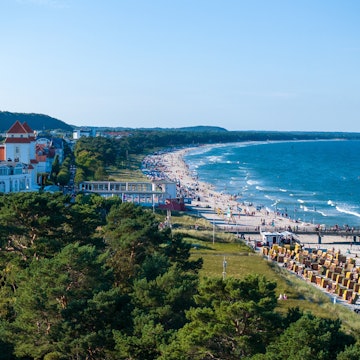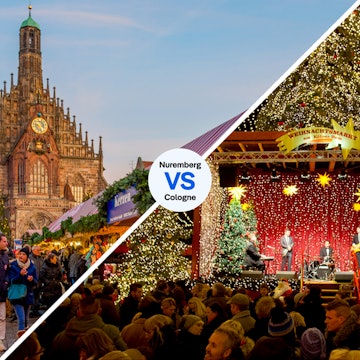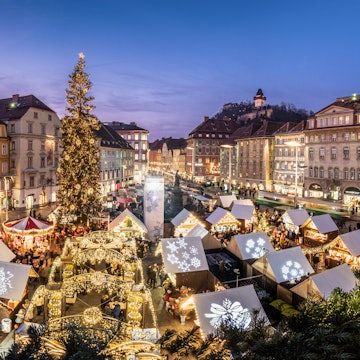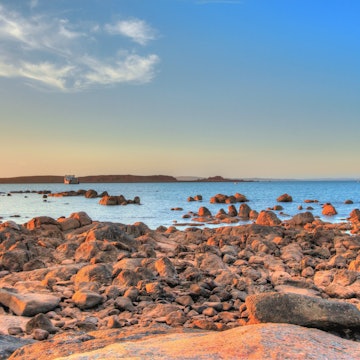

Try smoked beer in Bamberg. Peter Adams/Getty Images
For grand castles and gritty industrial architecture, half-timbered taverns and edgy techno nightclubs, head to Germany.
Explore culture-rich cities like Berlin or Hamburg; dive into the great outdoors by visiting epic mountains and national parks; or take a closer look at modern history and reminders of a divided past. Here are some of the top things to do across the country.

1. Skate down the runway at Berlin’s abandoned airport
Complete with runway markings, grounded planes and old hangars, Tempelhofer Feld in the south of Berlin is a much-loved spot in the city. The airport ceased operations in 2008 and was converted into a park two years later.
Today, it is roller skaters and cyclists who accelerate down the tarmac, while the greenery is used for picnics, community gardens or just to hang out. Look out for the information boards telling the story of the site, including its vital role during the Berlin Airlift from 1948 to 1949.
Local tip: In summer, the airport is a good spot for a barbeque – just make sure you stick to the designated areas.
2. Tap into Germany’s industrial side
The Ruhrgebiet in western Germany was once a global hub for coal mining and metal production. Since its decline, the area has undergone a major makeover – with repurposed industrial infrastructure at the forefront.
Highlights include the Zeche Zollverein, a former coal-mining complex now home to museums, cultural spaces and an outdoor swimming pool; and Landschaftspark Duisburg-Nord, a decommissioned ironworks with a diving center in the gasometer and climbing walls in the old ore storage bunkers.
Planning tip: For a full list of locations to visit, check out the Route der Industriekultur (Industrial Heritage Trail).

3. Scale Germany’s highest mountain
The Bavarian Alps have fantastic hiking and climbing routes, as well as cable cars that help you gain height a bit faster. The most awe-inspiring of these is the modern cable car on Germany’s highest mountain, Zugspitze.
In operation since 2017, this state-of-the-art construction has the world’s longest unsupported rope span and an epic top station perched on the rocky summit. While the journey doesn’t come cheap, the views are spectacular.
Planning tip: If possible, leave time to walk around the Eibsee lake at the base of the mountain. In warmer weather, you can also go for a dip in the strikingly blue water.
4. Drive the German Wine Route
The Deutsche Weinstrasse connects vineyards, villages and a number of Michelin-starred restaurants in the attractive Palatinate (Pfalz) region. The 85km route can be done as a road trip and provides a great introduction to the country’s vino.
Renowned for rieslings, this area also produces several other whites as well as an increasing volume of reds. Thanks to a moderate climate, you’ll even spy figs, kiwis and lemons growing here.
Also on the route is Hambacher Schloss, a hilltop location known for massive 1832 protests for democracy and German unification. An exhibition explains the events, with English-language guided tours available every 45 minutes.
Detour: For a lesser-known wine region, head up to Rheinhessen. Here, the locally based company BottleStops offers excellent tours in English.
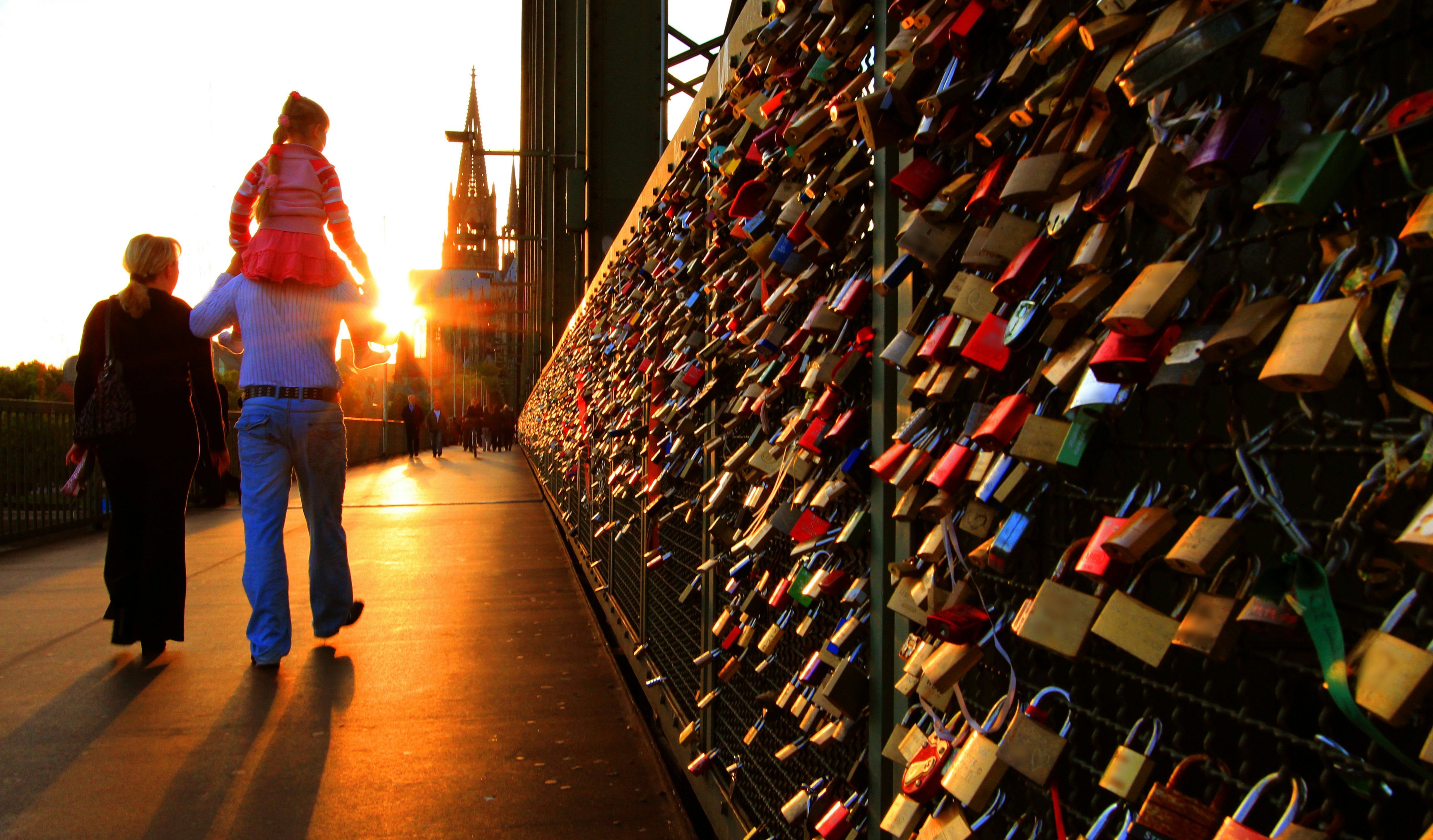
5. Cross the mighty Rhine in Cologne
One of the best ways to approach Kölner Dom (Cologne Cathedral) is to walk across Hohenzollern Bridge. Take in the city skyline and watch large barges glide along the Rhine below as the famous Gothic towers loom ever closer.
In 2008, people started attaching “love locks” to the bridge’s railings. Most are engraved with couples’ names or initials, with the key thrown into the water as a sign of eternal love.
6. Reflect on Nazi history in Nuremberg
The former Nazi Party Rally Grounds are located on the edge of Nuremberg. With many of the imposing structures still standing, such as the Zeppelinfeld Grandstand and the unfinished Congress Hall, the large site is an eerie place to walk around.
Elsewhere, the Memorium Nuremberg Trials examines the process that saw leading Nazi figures answer for their crimes and shaped the future of international criminal law. If not in use, you can visit the courtroom where the trials were held.
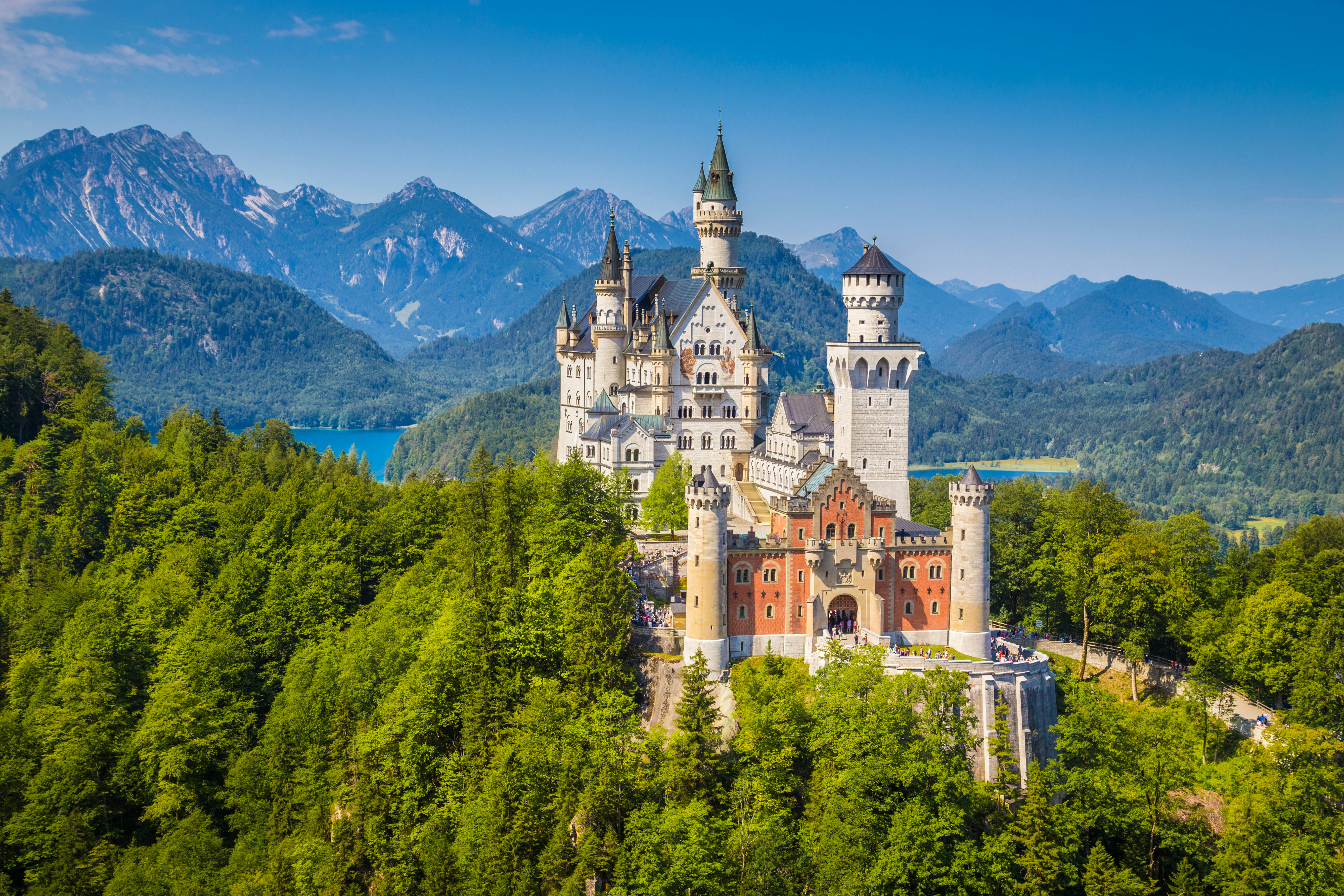
7. Visit lavish castles and palaces
Germany’s royal history is reflected in its castles and palaces. The most striking one is the 19th-century Schloss Neuschwanstein, built as a retreat for “mad” King Ludwig II and believed to have inspired Disney. Set against a breathtaking mountain backdrop, this fairy-tale castle must be seen to be believed.
Elsewhere, the dazzling Würzburg Residenz is a vast, dazzling 18th-century palace famed for its grand staircase and Tiepolo’s ceiling fresco. Forty of the palace's majestic rooms have been restored to their original splendor and are now open to the public.
In Munich, Schloss Nymphenburg was once the summer residence of Bavarian rulers. Its luxurious halls, vast gardens, and carriage museum make it one of the city’s top attractions, offering a peek into court life at its most ornate.
Planning tip: As with any major tourist attraction, avoid the crowds by arriving early or visiting outside of peak season.
8. Hit the spa in Baden-Baden
The mineral waters in the Black Forest have long attracted wellness enthusiasts to this region, particularly to Baden-Baden. Home to 12 thermal springs, the well-known spa town is perfect for a bit of pampering and luxury. Even celebs love it.
Get started at Friedrichsbad, a grand Renaissance-style building with domed ceilings, elaborate frescoes and a multi-station bathing circuit. Submerge yourself in thermal whirlpools, hot-air baths and cold water before heading to a relaxation room with a handy wake-up service.
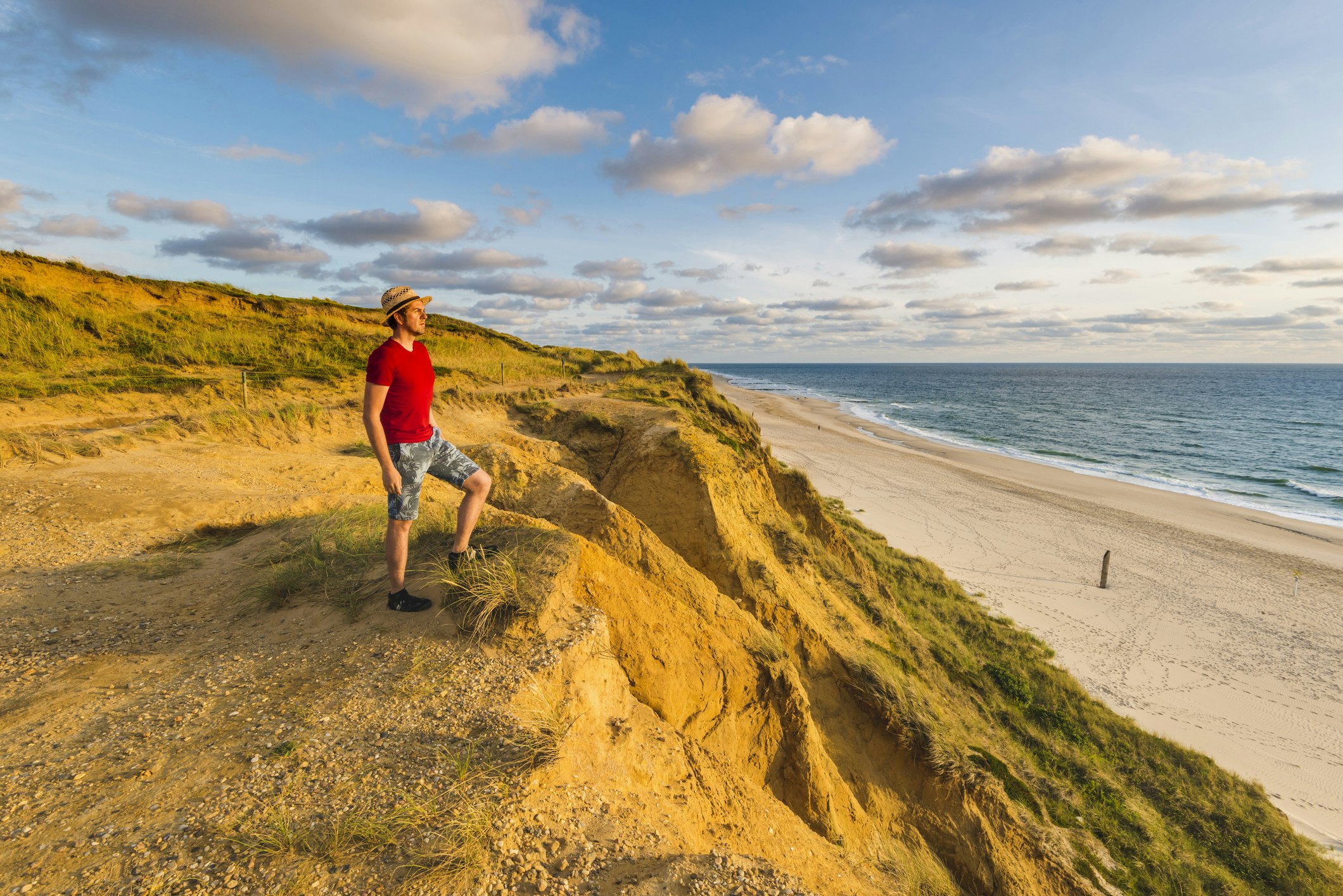
9. Try water sports on Sylt, Germany’s glitziest island
Sylt is the biggest of Germany’s North Frisian Islands and a top staycation destination. Sometimes referred to as the Saint-Tropez of the north or the Hamptons of Germany, it has grassy dunes and sandy beaches, as well as upmarket restaurants and hotels that cater to a wealthier crowd.
It is also a water sports hot spot. Thanks to choppy surf off the western coast and calmer waters in the Wadden Sea, the island accommodates both beginners and those with more experience.
Planning tip: Sylt is no secret and can be very busy during the summer months. Book ahead if you plan to visit then.
10. Cycle for cheese in the Allgäu region
Known for its cheese, the Allgäu region is home to alpine dairies, cow-filled meadows and wooden farmhouses. Best explored by bike, you’ll find several routes that pass different producers.
Staples include Bergkäse and Allgäuer Emmentaler cheeses. Don’t worry if the shops are closed; it won’t be long before you stumble upon a cheese-filled vending machine.
Local tip: Be sure to visit the soft cheese experts at Hoimat in Eschach. The young team behind this small business have created a stylish shop and cafe in a gorgeously restored barn.
11. Sip smoked beer in Bamberg
It’s not hard to find beer in Germany, but for something a little different, visit the beautiful Franconian town of Bamberg. Here you’ll discover the local tipple, Rauchbier (smoked beer), best enjoyed in a cozy, half-timbered tavern.
According to legend, Rauchbier was invented by accident following a fire in a brewery. Today, the beer is served in many places, but only two breweries still stick to tradition and kiln malt over an open wood fire: Schlenkerla and Brauerei Spezial.
Local tip: Keep an eye out for the beer in dishes such as pork-filled roasted onion served with mashed potato and Rauchbier sauce.

12. Stroll along the murals on the Berlin Wall
There are several locations in the German capital where you can see remaining parts of the Berlin Wall, but the East Side Gallery stands out. The 1.3km stretch running parallel to the river Spree is covered in murals created by international artists following the fall of the wall, including Birgit Kind's iconic image of a car.
Surrounded by many new apartment blocks and office complexes – some complete, some still under construction – this part of town demonstrates the vast scale of redevelopment that has shaped the city since reunification.
Local tip: For a more sober look at the impact of the divide, head to Gedenkstätte Berliner Mauer at Bernauer Straße. This outdoor memorial includes another original piece of wall.
13. Catch a concert at Hamburg’s most impressive venue
Standing proudly on a peninsula in Hamburg, the Elbphilharmonie is an architectural masterpiece. Opened in 2017, the concert hall features a new, shimmering glass structure perched atop an old red-brick warehouse.
Check out the program of events or simply head up to the Elbphilharmonie Plaza for panoramic views across the city and along the river. The open-air platform is free of charge and wraps around the entire building.
Local tip: Some harbor boat tours go past the outside of the building, allowing you to see it from a different angle.
14. Visit the Dachau Concentration Camp Memorial Site
Located on the outskirts of Munich, Dachau was one of the first concentration camps to be built and later became the first memorial of its kind in Germany. Known as KZ-Gedenkstätte Dachau, you can wander around the site, including the tree-lined camp road and the roll call area – all looked over by watchtowers.
Permanent exhibitions provide extensive information about the camp and the prisoners, as well as what happened after liberation. Entrance is free and all texts are provided in English and German.
Planning tip: The memorial is easy to reach using public transport from Munich. Take the S-Bahn (S2) to Dachau station and pick up the 726 bus from there. It will drop you right outside the entrance.

15. Feel Leipzig’s creative buzz
Fans of Berlin’s edge should also visit Leipzig. The former East German city is constantly evolving and appeals to artists and designers, many making use of empty industrial spaces.
Discover alternative neighborhoods, cool projects and edgy installations, before exploring connections to creative masterminds of the past. Leipzig is where Richard Wagner was born and was home to Felix Mendelssohn and Johann Sebastian Bach.
16. Go hiking in Saxon Switzerland National Park
Sandstone pinnacles and tabletop mountains create this unusual landscape in the east of the country. Germany’s only non-alpine rock national park, Sächsische Schweiz is a haven for sporty types. The best-known spot is the Basteibrücke, a magnificent stone bridge between two towers of rock.
Detour: Easy to reach by car or public transport, the nearby city of Dresden is where you’ll find landmarks such as the Zwinger Palace and the reconstructed Frauenkirche.
17. Spend an afternoon in a Munich beer garden
Beer gardens are central to Munich life. As soon as the good weather hits, locals head to their favorite one for a cold beer and a chinwag with friends. You’ll also often see groups celebrating birthdays and other events at the long tables.
Go to Seehaus in Englischer Garten for drinks by a lake, Paulaner am Nockherberg for a modern in-house brewery or laid-back Biergarten Muffatwerk for some organic grub.

18. Visit Beethoven's birthplace
Classical music echoes throughout Germany, from Leipzig’s association with Bach, Mendelssohn and Wagner to Berlin’s Philharmonic. For a more intimate experience, visit Bonn and the Beethoven-Haus Bonn. The composer’s birthplace preserves his childhood rooms and displays original manuscripts and instruments. Regular concerts add another layer of resonance to the experience.
19. Behold Aachener Dom
Aachener Dom is a monument of European history. It has been a pilgrimage site since the 12th century, saw the crowning of more than 30 German kings, and is the burial place of Charlemagne. The soaring architecture and spiritual gravity here are inspiring, and the collection of and the collection of reliquaries includes sacred objects, among them garments associated with Jesus.
Planning tip: You'll need to join a guided tour in order to see Charlemagne's marble throne in the upper gallery.








